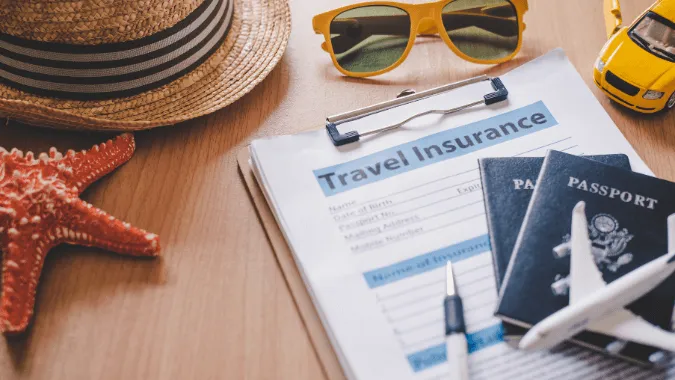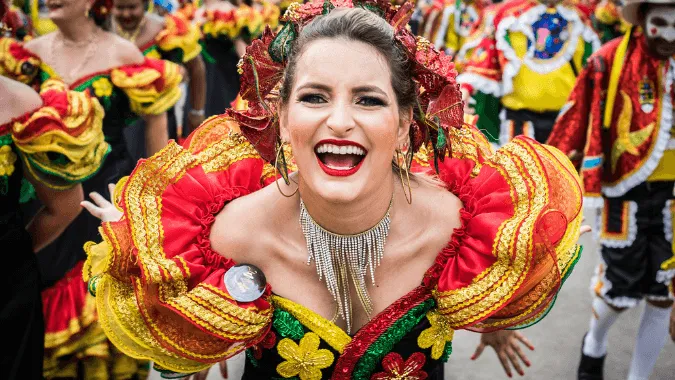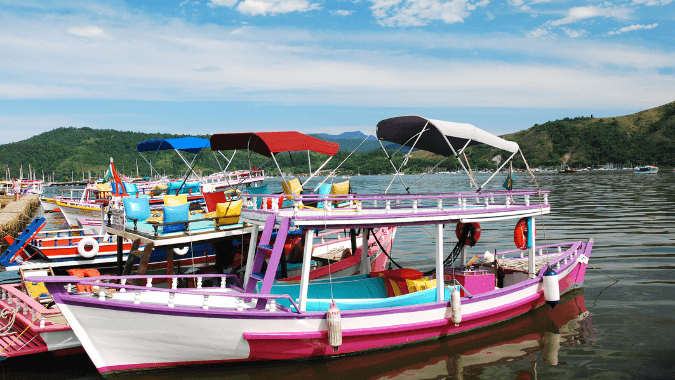How to Get Around Rio de Janeiro
At some point during your time in Rio de Janeiro you're going to want to leave the beach (hard to believe, isn't it!). The city is large and spread over a vast distance, so using public transport is inevitable.
Luckily, transport in Rio is easy to use, even if you don't speak any Portuguese. There are various ways to get around Rio de Janeiro, each with its own advantages.
Taking the bus in Rio de Janeiro
The buses in Rio de Janeiro are the most affordable way of getting around the city. They're mostly air-conditioned, and are simple to use. Do keep in mind that they can get very crowded, and can be slow due to traffic. While safe during the day, avoid using them at night.
- The standard fare is R$3,40. Try to pay with change, or small bills if possible. Many buses have a dedicated conductor on board to collect the fare and give you change, before letting you through the turnstile on the bus.
- There are also premium blue buses which run between both airports and the Zona Sul.
- The bus lines are clearly marked, with the line number and end destination prominently displayed. Buses stop at designated stops, although you should indicate to the bus by waving your hand that you want him to stop in order to get on.
- Popular bus lines you might need to make use of are the 583 from Copacabana and Ipanema to the Corcovado train station (take the 584 to return), and the 511 to Sugar Loaf Mountain (512 to return). Conductors realise these routes have many tourists and will usually let you know when you're at your stop.
- To work out your bus route, check out vá de ônibus or pick up a transport map from a tourist information kiosk in Rio.
 Taking the bus is the cheapest way to get around Rio de Janeiro / source[/caption]
Taking the bus is the cheapest way to get around Rio de Janeiro / source[/caption] Using the Subway in Rio
The subway in Rio de Janeiro is another cheap and quick way of getting around Rio, and, outside peak times, a comfortable mode of transport. As it is privately owned, the subway system is extremely clean, modern and, most importantly, air-conditioned. Like any subway system in the world, it gets extremely crowded during peak times, so avoid using it during the commuter rush.
- Tickets cost R$3,50, and can be bought in the subway station. If you purchased a single trip ("unitario"), insert the card into the turnstile. If you are using a multi-pass, swipe the card.
- The subway runs from 5am to midnight from Monday to Saturday, and from 7am to 11pm on Sundays and holidays. During Carnival, the subway runs continuously through the night.
- There are two lines, green and orange, which connect between Botafogo and Central stations. You can see the subway map here.
- There are separate carriages for women during peak times to avoid potential harassment.
- There is an additional bus line linked to the subway called the Metrô Na Superficie (subway above ground), which goes to Ipanema, Lagoa and the Botanical Garden. When buying your subway ticket, make sure you mention that you are going to be using this line, and you'll be given an extra ticket.
 The subway in Rio de Janeiro even has women only carriages / source[/caption]
The subway in Rio de Janeiro even has women only carriages / source[/caption] Taking a Taxi in Rio
Taxis are undeniably the most comfortable way to travel around Rio de Janeiro, and will get you to your destination faster than any other form of travel. They are available in almost all areas of Greater Rio, except the favelas, and are safe and clean.
- There are two types of taxis: the yellow cabs, which use the taxi metre, and radio taxis, which use a fixed price.
- When using a yellow cab, opt for a licensed taxi, rather than an independent one, indicated by the logo on the car. Also make sure that the taxi meter is switched on. If it is not, just ask "Taxímetro?"
- Fares work on two flags. Flag 1 starts at R$5,20 + R$2,05 per km and Flag 2, used from 9pm to 6am, Sundays and holidays, starts at R$5,20 + R$2,46 per km. Note that this is not necessarily the fee that the meter shows. It takes time to recalibrate all the taxi metres after the city raises the fee, so taxi drivers use a conversion chart, which is also available for you to see in the cab.
- To work out the rough cost of how much your taxi ride should cost you, you can use this taxi fare calculator.
- Radio taxis are the most reliable, and most expensive. These are a good idea to use when you need to arrange a fixed time to be picked up. The operator will give you a non-negotiable price, so there are no surprises. This is useful when using a taxi at times of high traffic, especially during Carnival or the upcoming Olympics.
- There is also now the option of using Uber in Rio de Janeiro.
 It can be best to take a taxi if you're in a rush! / source[/caption]
It can be best to take a taxi if you're in a rush! / source[/caption] Taking the Ferry to Niteroi
There are various ferries you can take to get to Niteroi, Rio's sister city on the other side of Guanabara Bay. If you have time, this trip is worth it to see Oscar Niemeyer's space-age building Museu de Arte Contemporânea and visit Fortaleza Santa Cruz. There are also a number of beautiful beaches, which are significantly less crowded than in Rio. Plus the ferry trip to the other side of the bay is scenic, cheap and relatively quick.
- The ferry company is called CCR Barcas. Tickets can be bought at the ferry.
- Boats go from Praça XV in Rio, the dock next to Santos Dumont Airport.
- You can take the ferry to Praça Arariboia (for downtown Niteroi). The trip lasts 20 minutes, costs R$5,00, and runs every 10 minutes during the week between 6am and midnight, and every 30 minutes during the weekend.
- Another popular destination is Charitas, a neighbourhood in southern Niteroi, with good restaurants and beaches, particularly for windsurfers. The ferry takes 20 minutes, and costs R$13,90. This route uses the more modern catamarans, making for a very pleasant journey.
- The ferry can also be taken from Praça XV to Paquetá - an island in Guanabara Bay. The trip takes 50-70 minutes, and costs R$5,00.
 The ferry is a scenic way to get to Niteroi / source[/caption]
The ferry is a scenic way to get to Niteroi / source[/caption] Of course, two other great options for getting around Rio de Janeiro are walking and cycling. This is the best way to move between beaches and to see the impressive length of Copacabana and Ipanema. Plus, you'll have the company of plenty of active Cariocas enjoying the outdoors.
Need reliable transport from the airport or to get to the towns outside of Rio, like Paraty and Angra dos Reis? Book a transfer service with Rdj4u for a hassle-free journey!
-
Exciting 4x4 route: São Luís and FortalezafromUS$1,014
-
Vila Gale Mares Resort All InclusivefromUS$100
-
Ecotourism in Chapada DiamantinafromUS$672
-
All inclusive Vila Gelé Cumbuco ResortfromUS$999
-
Full Day Cafayate Tour from SaltafromUS$68
-
Transfer Aeroparque - Buenos AiresfromUS$46
-
-
Transfer Ezeiza - AeroparquefromUS$91
-
-
Excursion to El Chaltén from El CalafatefromUS$153
-
-
-
-
-
-
-
-
-
-
-



